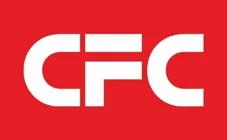您正在使用一款已经过时的浏览器!部分功能不能正常使用。
请尝试升级或使用 其他浏览器。
请尝试升级或使用 其他浏览器。
又是IT问题
- 主题发起人 depon
- 开始时间
- 注册
- 2011-02-04
- 消息
- 5,950
- 荣誉分数
- 991
- 声望点数
- 173
- 注册
- 2011-02-04
- 消息
- 5,950
- 荣誉分数
- 991
- 声望点数
- 173
- 注册
- 2003-09-30
- 消息
- 79,553
- 荣誉分数
- 23,474
- 声望点数
- 1,373
mac os x is based on netbsd ba?
- 注册
- 2004-07-18
- 消息
- 46,703
- 荣誉分数
- 20,498
- 声望点数
- 1,393
mac os x is based on netbsd ba?
哈,刚查了 wiki, 应该是从 mach 来的
- 注册
- 2003-09-30
- 消息
- 79,553
- 荣誉分数
- 23,474
- 声望点数
- 1,373
Mach has something to do with Bsd
Mach is an operating system kernel developed at Carnegie Mellon University to support operating system research, primarily distributed and parallel computation. Although Mach is often mentioned as one of the earliest examples of a microkernel, not all versions of Mach are microkernels. Mach's derivatives are the basis of the modern operating system kernels in Mac OS X (which is not a microkernel[1]) and GNU Hurd (which is a microkernel).
The project at Carnegie Mellon ran from 1985 to 1994, ending in apparent failure with Mach 3.0, which was finally a true microkernel. Mach was developed as a replacement for the kernel in the BSD version of UNIX, so no new operating system would have to be designed around it. Today further experimental research on Mach appears to have ended, although Mach and its derivatives are in use in a number of commercial operating systems, such as NeXTSTEP and OPENSTEP, and most notably Mac OS X using the XNU operating system kernel which incorporates an earlier (non-microkernel) Mach as a major component. The Mach virtual memory management system was also adopted by the BSD developers at CSRG, and appears in modern BSD-derived UNIX systems, such as FreeBSD. Neither Mac OS X nor FreeBSD maintain the microkernel structure pioneered in Mach, although Mac OS X continues to offer microkernel inter-process communication and control primitives for use directly by applications.
Mach is the logical successor to Carnegie Mellon's Accent kernel. The lead developer on the Mach project, Richard Rashid, has been working at Microsoft since 1991 in various top-level positions revolving around the Microsoft Research division. Another of the original Mach developers, Avie Tevanian, was formerly head of software at NeXT, then Chief Software Technology Officer at Apple Computer until March 2006.[2]
Mach is an operating system kernel developed at Carnegie Mellon University to support operating system research, primarily distributed and parallel computation. Although Mach is often mentioned as one of the earliest examples of a microkernel, not all versions of Mach are microkernels. Mach's derivatives are the basis of the modern operating system kernels in Mac OS X (which is not a microkernel[1]) and GNU Hurd (which is a microkernel).
The project at Carnegie Mellon ran from 1985 to 1994, ending in apparent failure with Mach 3.0, which was finally a true microkernel. Mach was developed as a replacement for the kernel in the BSD version of UNIX, so no new operating system would have to be designed around it. Today further experimental research on Mach appears to have ended, although Mach and its derivatives are in use in a number of commercial operating systems, such as NeXTSTEP and OPENSTEP, and most notably Mac OS X using the XNU operating system kernel which incorporates an earlier (non-microkernel) Mach as a major component. The Mach virtual memory management system was also adopted by the BSD developers at CSRG, and appears in modern BSD-derived UNIX systems, such as FreeBSD. Neither Mac OS X nor FreeBSD maintain the microkernel structure pioneered in Mach, although Mac OS X continues to offer microkernel inter-process communication and control primitives for use directly by applications.
Mach is the logical successor to Carnegie Mellon's Accent kernel. The lead developer on the Mach project, Richard Rashid, has been working at Microsoft since 1991 in various top-level positions revolving around the Microsoft Research division. Another of the original Mach developers, Avie Tevanian, was formerly head of software at NeXT, then Chief Software Technology Officer at Apple Computer until March 2006.[2]
